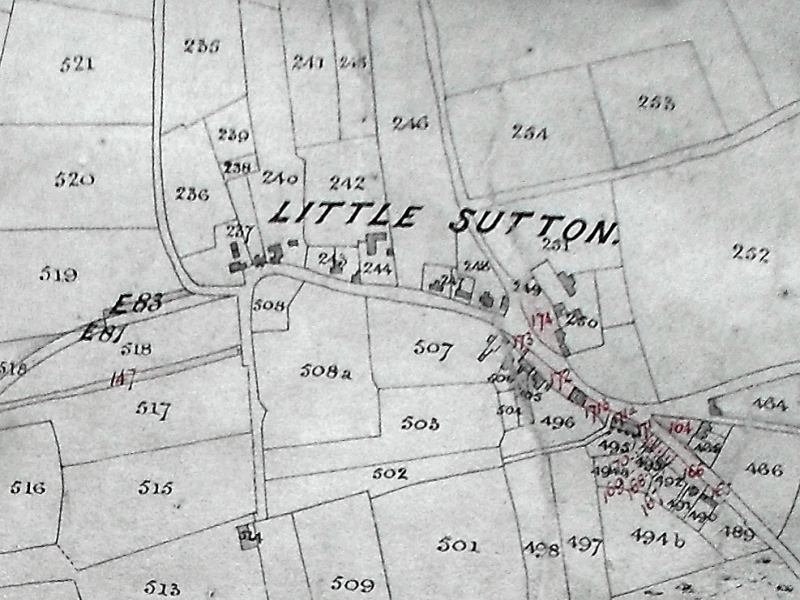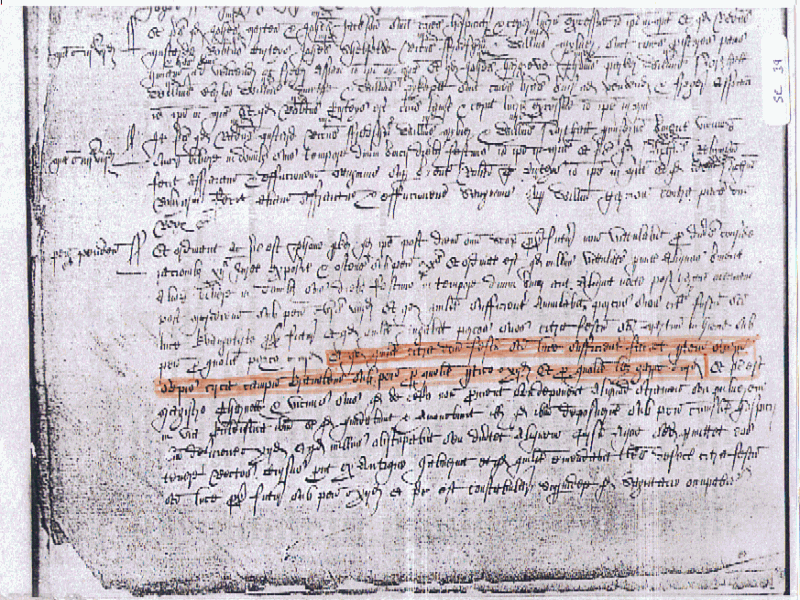William Croxall of Little Sutton made his will on June 8th 1569. Two months earlier a survey of his farm had been made, showing that he was the tenant of thirty-seven strips of land in three open fields. This distribution of his holding is consistent with the traditional feudal pattern, leading to the conclusion that the ancient customs still prevailed. But other evidence shows that the open field system in Little Sutton was in a state of collapse in 1569.
Croxall, along with his neighbours William Phillips, William Johnson and Edward Parton, was fined fourpence at the October 1559 court for destroying fences and hedges, and a later court increased the fine for this offence to one shilling. The fences had been erected by enterprising farmers who had managed to consolidate their strips in the open fields and turned them into fenced square fields which could be laid down to pasture. This interfered with the traditional communal ploughing of the open fields, so the traditionalists threw down the fences in protest. Such new fields, severed from the open fields by stock-proof fences, were described as “several” in the 1569 survey; in Little Sutton, Mrs. Yardley, Nicholas Turner, Nicholas Burton and Thomas Spooner all had “several” fields.
Other changes are evident from the 1571 probate inventory of William Croxall’s possessions. This lists a horse as the draught animal instead of the traditional oxen, and he had a bull, six cattle and thirty sheep which must have meant devoting some of his land to pasture - he only had three acres of growing crops, one of rye and two of oats. Croxall was a craftsman as well as a farmer, but it is not clear what his trade was - the inventory records “16 kinds of coals concerning his occupation” valued at five shillings, and also mentions a kiln.
Nicholas Turner of Little Sutton died in 1569, and his probate inventory also survives in Lichfield Record Office. Turner farmed on a larger scale than Croxall - some of his land in the open fields was “several” - and he had two horses, twenty-four cattle (including eight calves) and eighty sheep according to the inventory. This large flock of sheep could graze freely on Sutton’s very extensive commons; in feudal times the forest laws which operated in Sutton prohibited the depasturing of sheep on the commons on the grounds that their grazing would interfere with the deer, but this restriction was lifted when Bishop Vesey disforested the Chase of Sutton Coldfield in 1529.
Buying and selling land and property, rather than being the tenant of a feudal lord, became easier in 1535 when the Act of Parliament known as the Statute of Uses was passed. Thomas Chattock, the owner of the farm tenanted by Croxall, broke with tradition by building a farmhouse out in the fields rather than next to the village green in Little Sutton Road - in October 1560 the court ordered Nicholas Turner “not to block the spring in the lane leading from Little Sutton to William Croxall’s house”. This house must have been Townwell Farm, demolished in 1963 to make way for a new housing estate - it stood near what is now Rowallan Road.

